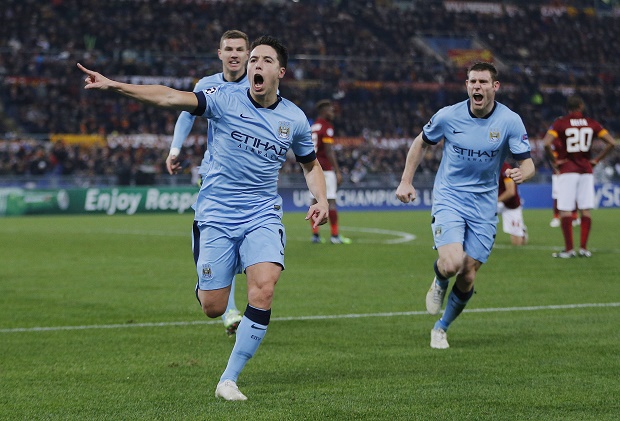
Have you ever wondered how much sponsorship affects the sports industry, while browsing the events at PalmerBet Australia or other sportsbooks? In 2020 the market size of sports sponsorship was estimated to be at 57 billion dollars. Today we’re going to discuss the importance of sponsorship and the benefits it grants to all the parties involved.
One case that shows the positive effect of sponsorship very clearly is Red Bull investing in soccer. They have bought and rebranded a soccer team in the U.S. and it is known that soccer is not popular enough in the region. However, thanks to the promotion of Red Bull, soccer became a lot popular among their target audience of young people. And, in turn, Red Bull became the most popular energy drink among soccer fans in the whole country.
Concerning the benefits of sponsors, it is obvious that they can put their ads on stadiums. But with the development of technology and online broadcasts, the industry faces a huge challenge. The bigger the industry, the harder it is to adapt to new conditions, especially when the changes are as dramatic as in this case. The new parameter in the equation is social media: both the sponsors and the sponsored brands are now strongly influenced by these platforms and have to adjust their relationships a lot.
Large Audience for Large Sports
The popularity of international sport events and world championships is unquestionable. There are many reasons for that, including unity, competition and even patriotism. Some people support their national teams, while others watch professionals play their favorite sports to learn new tricks and follow the best players. The Super Bowl of 2020, for example, was watched by almost 150 million people in total.
Such popularity of sports creates a lot of space for sponsorship as it offers a lot of viewers of different ages. In other words, it allows them to address a target audience for a wide range of brands. The returns of the sponsor will likely be high as the audience is large: even with a low conversion rate the brands will get a lot of attention and the absolute amount of purchases will still grow a lot. There are lots of sports that are suitable for sponsorship: soccer, basketball, surfing and many others.
Social Media Transforms the Market
Returning to the point about social media platforms, they have caused massive transformations in the sponsorship market. However, it did not decrease the sponsorship amounts: the industry has managed to adapt quickly. Lots of fans are using social media during live events, it is not even necessary for them to attend the match physically. These fans post stories, pictures or short clips of the event, then the best moment compilations are posted after the event ends, giving a lot of additional attention. This, in fact, gives a great opportunity for brands as they now have more options for advertising apart from the TV.
The brands used to sponsor the teams and the sportsmen before, but now they can also sponsor social media platforms: for example, they can promote their products on the official pages of famous athletes on social media. These advertisements are still quite fresh and give high conversion rates, increasing the products’ popularity a lot.
To be more specific, let us overview the example of soccer. According to Facebook, more than 35% of their users are fans of this sport and on Twitter it is one of the most frequently addressed topics. This creates a lot of attention to the sports and opens vast opportunities for brands to promote themselves.
Moreover, with social media the sponsors can now more accurately find their target audience. As all the platforms offer detailed statistics on the main parameters of users, the sponsor now may reach even higher conversion rates by properly managing their promotions.
Benefits for Brands and Sportsmen
Of course, there would be no sponsorships if it wasn’t beneficial for both sides. For brands and athletes, it is in the first place a stable source of revenue. It allows them to focus more on reaching new heights instead of looking for funds.
The impact of social media has made it even more beneficial for both sides: while sponsors get new platforms they can promote on, the clubs and athletes are now able to attract more investments. The brand has more advertising instruments, while the club can attract more sponsors and get additional funds for social media promotions.
Moreover, it has a positive effect on the brand’s employees. It is proven that employees who work in a company that features on popular events and on social media of the popular athletes feel better about their job. Their self-esteem and the belief in their company increases, which is both beneficial for them as they are more satisfied with their job and for the company as their employees get more productive and more new people are eager to join.
Tracking the Investments
As with any other financial investments, the data behind sponsorship is extremely important. Analyzing the efficiency of the sponsorships and projecting the returns from future investments is crucial for any brand.
As we have mentioned, social media platforms provide a lot of data that is used for targeting the audience. But that’s not it: the digital promotions also have a range of instruments to analyze the returns. The brands now may analyze the incoming traffic and see exact conversion rates.
The use of these technologies has been clearly seen with the social media platforms, when they only started to become popular and first sponsors entered. The way promotions were done has changed more towards different influencers instead of athletes and there is definitely a lot of data analysis behind this transition.
Conclusion
Summing up, sports sponsorship is beneficial for both the parties and even more. With social media entering the market the rules have changed a lot, but the brands were very quick to adapt and now have a lot of additional benefits as well as the sports clubs and athletes. There is a lot more about sponsorship left to uncover, so let us know in the comments if you’d like to see more articles on the topic.


Book Reviews
Book Review: Chris Towers finds right mix

Book Reviews
Book Review: Sir Geoff Hurst hits net








